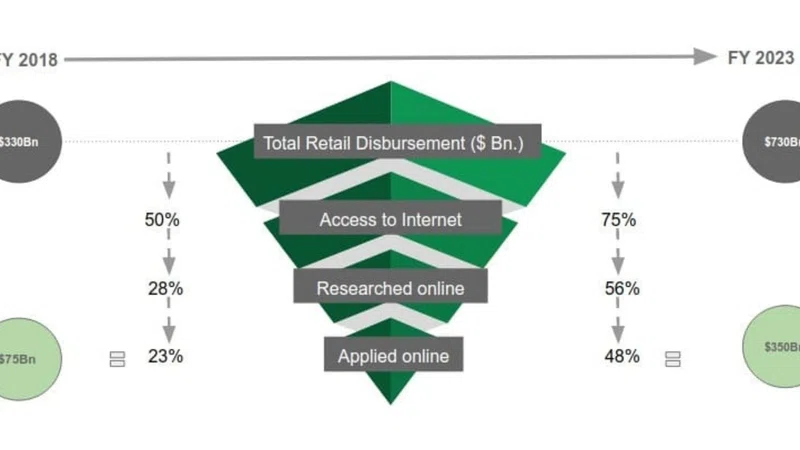Cryptocurrencies, especially Bitcoin, are facing increased regulatory scrutiny, and that is not strange. Warnings from regulatory watchdogs all over the globe have come amid a wildly volatile ride for Bitcoin and other crypto currencies. Bitcoin prices quadrupled in 12 months’ time reaching an all-time high of more than $ 40.000 on 8 January after falling back even below $30.000.
This is feeding concerns by financial regulators over the lack of a robust and a clear regulatory framework for this rapid evolving crypto marketplace. Regulators worldwide are sharpening their focus on cryptocurrencies and are increasingly looking for a stable framework of regulations and monitoring.
Issues that come up are: why is regulation of the crypto market needed at all and what should be the best regulatory approach?
Existing regulatory patchwork
Crypto regulation in many countries is still lagging behind whereas crypto’s regulatory puzzle is far from complete. Many jurisdictions have looked into regulating cryptocurrency related operations. Thereby they however have taken different approaches on how to go about regulate these which has led to a regulatory patchwork.
These approaches range from a complete outright ban, to a wait-and see approach how matters would play out, while others have introduced some sort of regulation. Major countries and bodies continued introducing regulation just for one area or aspect of the cryptoasset industry at a time. And areas of crypto asset regulation vary from one nation to another, according to each nation’s priorities and values.
Many major countries haven’t yet introduced specific legislation or regulatory guidance that covers the sector as a whole, while others are taking a step-by-step approach. Looking at the G7 countries, they are in varying stages of implementing cryptocurrency regulation, revising existing laws, and providing more clarity to investors and companies in the space.
But that is changing.
But why is crypto regulation needed at all?
There is increasingly conviction amongst regulators worldwide that crypto currencies in some form or another are here to stay and continue to play an increasingly normalised role for investors. So we are well beyond the stage where countries could completely ban crypto currencies or adopted a wait-and-see attitude.
We have reached a point where regulators should step in, motivated by the growing interest in cryptocurrency globally and the inherent risks associated with digital assets because they are largely unregulated. Cryptocurrencies should therefore come on the regulatory radar and be held the same standards as the rest of the financial world.
Main stream adoption
There is increased interest by institutional investors in crypto and expectations are that this will continue, triggered by the growing number of new use cases and wider acceptance by traditional banks and financial institutions. This has attracted a strongly growing number of private investors and as aa result to mainstream adoption.
Bitcoin and other cryptocurrencies are increasingly seen as a legitimate hedge against fiat currency weakness and inflation risk, and low returns from traditional safe havens such as sovereign debt. As a result investors are looking more closely at cryptocurrencies. So these cannot be neglected anymore by regulators.
Protection to investors
Though their total market value is still limited compared to fiat currencies Bitcoin and other cryptocurrencies are described by central banks and regulators not as a currency, but much more as a highly volatile and speculative asset. Cryptocurrencies’ volatility are largely a function of thin market volumes and concentrated holdings, possibly in the hands of a few early-adopters known as ‘whales.’ Retail investors should be protected against too much volatility. Providing a regulatory framework will give protection to investors and stakeholders
Closer interaction with the real world
Another argument for more regulation is that, on an increasing basis, cryptocurrencies are becoming part of the incumbent financial system and are increasingly integrated into the existing financial infrastructure. Cryptocurrencies took a step closer to interacting with the real world in October last year when PayPal announced that its US customers can buy, sell or hold four cryptocurrencies: Bitcoin, Ethereum, Bitcoin Cash and Litecoin.
Combat illegal activity
Because of its cross-border crossing character and the lack of surveillance regulators suspect that these cryptocurrencies can be used for criminal activities like money laundering. How many Bitcoin are from a criminal order is hard to predict. But estimates range from 1 percent to 44 percent. Regulators should therefore provide assurances and impose requirements on operators to follow stringent rules to combat illegal activity.
Changing regulatory attitude
But the attitude of regulators worldwide is changing. Recent developments have triggered officials all over the world, including the G7, ECP president Christine Lagarde and the UK CFA, to express their worries about the unregulated growth of Bitcoins and other cryptocurrencies.
The overarching regulatory trend in 2021 will be for governments and regulators to be more favourable towards crypto, increasingly shape crypto into a consumer-friendly and less risky product.
Regulators increasingly recognize that cryptocurrency is here to stay, realizing the true potential of the crypto sector, with their actions being adapted accordingly. They highlighted the need to intensify their work for more stringent robust regulations for cryptocurrencies and create a much improved regulatory landscape to control the crypto markets.
G7 Meeting
At its recent meeting early January the G7 finance ministers and central bank governors reiterated support for their joint statement on digital payments issued in October underlining the need to regulate cryptocurrencies. They discussed ongoing responses to the evolving landscape of crypto assets and other digital assets and national authorities’ work to prevent their use for malign purposes and illicit activities.
ECB President Christine Lagarde
At that same G7 meeting Christine Lagarde, president of the ECB, warned investors about the risk of these cryptocurrencies such as Bitcoin. She also dismissed Bitcoin’s claim as a currency. According to her there is urgent need to implement legislation relative to cryptocurrencies.
“Bitcoin is a highly speculative asset, which has conducted some funny business and some interesting and totally reprehensible money laundering activity”. Christine Lagarde
UK Financial Conduct Authority
In the UK, the Financial Conduct Authority (FCA), issued a stark warning for consumers and retail investors about high-risk crypto investments and the surge of related scams in the industry. The FCA’s concerns include price volatility, the complexity of products offered and the lack of consumer protection regulation around many of the products. Consumers have no recourse to UK regulators for “cryptocurrency bets that turn sour”.
“If consumers invest in these types of product, they should be prepared to lose all their money.” CFA
US Treasury Secretary Janet Yellen
Crypto regulation will also be a top priority for the Biden team. The Biden Administration is expected to bring a renewed focus on regulation and enforcement of the crypto market. The new US Treasury Secretary Janet Yellen – former Federal Reserve Chair – described Bitcoin as a ‘highly speculative’ and not a stable store of value’ when still at the Fed in 2017.
New regulatory initiatives
From a G7 perspective, we already have seen some interesting examples of regulatory initiatives in both the EU and the UK, while the new Biden Administration is certainly coming with their proposals.
European Commission: Markets in Crypto Assets Regulation
The European Commission recently published its first draft for Markets in Crypto Assets or MiCA. A package of legislative proposals for the regulation of crypto-assets, updating certain financial market. The draft regulation should create a clear legal framework for crypto assets and more broadly for Distributed Ledger Technology (DLT), providing regulatory clarity for the industry and ensure unified legislation on cryptocurrencies throughout the EU.
It wants to support innovation while also creating a secure and trustworthy framework for cryptocurrencies, with the same level of protection for consumers and investors as for traditional financial products. The legislative process for MICA within the EU will continue before this becomes a definitive regulation. Expectations are that this draft regulation will be finalized in legal texts in 1,5 to 2 years’ time.
Basic principles
MiCA wants to create the same safe framework as the one we already know from classic financial services. This is mirrored in many of the principles that MiCA imposes on issuers and service providers of crypto assets, such as the prohibition of insider trading and market manipulation.
MiCA is primarily creating a new licensing system for crypto asset issuers and service providers at a European level. It provides substantive rules of conduct and many aspects of consumer protection. MiCA is also introducing a new EU-wide passport for operators licensed under the MiCA regime in their own Member State.
Pilot regime for market infrastructures
The European Commission therefor proposed a pilot regime for market infrastructures that wish to try to trade and settle transactions in financial instruments in crypto-asset form. The pilot regime allows for exemptions from existing rules and allows regulators and companies to test innovative solutions utilising blockchains.
For other crypto-assets that do not qualify as “financial instruments” such as utility tokens or payment tokens, the Commission proposed a specific new framework that would replace all other EU rules and national rules currently governing the issuance, trading and storing of such crypto assets. The proposed regulation covers not only entities issuing crypto-assets but also firms providing services around these crypto-assets such as firms operating digital wallets, as well as cryptocurrency exchanges.
UK Treasury: crypto consultation paper
The UK Treasury has launched a consultation paper that details a series of proposals addressing the crypto community. With the consultation, the Treasury is initiating a “regulatory approach to cryptoassets and stablecoins” for 2021. Aim of this consultation paper is to gather feedback from stakeholders concerning the government’s regulatory approach to crypto asset and stablecoins in payments and investment, as well as the use of blockchain or distributed ledger technology in financial markets.
More broadly, the UK intends to take a “staged and proportionate approach” to new crypto asset developments. Underlying the UK approach is a desire to avoid applying “disproportionate or overly burdensome regulation to entities”, particularly where the financial stability risks are low, stressing the importance of a risk-led approach to regulation.
The Treasury expects to collect insights from the “industry and stakeholders” in the crypto sphere until March 21, 2021. Input received will feed into the government’s response, which will include more detail on how the proposed approach may be implemented in law. The legislation would take the form of high-level principles, leaving it for financial regulators to specify detailed requirements through rules or codes of practice.
Focus on stablecoins
The consultation focuses particularly on developing a “sound regulatory environment” for stablecoins, which the U.K. government considers have most “urgent” risks and opportunities. Stable coins could “pose a range of risks to consumers and, depending on their uptake, to the stability of the financial system. It is not proposing to regulate further any other types of cryptoasset for now, except in relation to financial promotions (in relation to which it has already consulted and will report in due course).
This approach stands in stark contrast to the European Commission’s legislative proposals which already include a comprehensive framework to regulate the entire crypto industry (MiCA) as well as a pilot regime for the creation and testing of digital security infrastructure.
Biden Administration
The regulatory landscape took on new uncertainty as a result of the power shift in Washington to President Joe Biden and a Democratically controlled Congress.
The new US President Joe Biden has frozen all federal regulatory proposals from Trump’s Administration, including some controversial proposed rules from former Treasury Secretary Steve Mnuchin's on self-hosted crypto wallets, until his new administration can review them. Former Treasury Secretary Steven Mnuchin drew heavy criticism from cryptocurrency insiders with his privacy-hostile regulatory proposals.
President Biden is putting together a team of financial leaders that should provide more clarity and guidelines for crypto regulations, get clear rules for the entire crypto industry and a better coordination between the various agencies like SEC, CFTC and. The new team brings their stated support for reasonable and equally balanced cryptocurrency regulatory model.
Three of Biden's top-level financial staff members, including Janet Yellen, the new US Treasure and former Fed chair, Gary Gensler, the new head of the Securities Exchange Commission (SEC) and former chair of the US Commodity Futures Trading Commission (CFTC), and professor Chris Brummer as new chairman of the CFTC all have a proven understanding of how blockchain and cryptocurrency assets actually work.
Yellen pledged to do a deep review of cryptocurrency markets in collaboration with many other banking and finance regulators, hoping to establish an effective set of rules that limits "malign and illegal activities" while supporting powerful fintech innovations based on blockchain technologies.
WHAT REGULATORY APPROACH IS REALLY NEEDED?
Notwithstanding these new regulatory initiatives, there are still many challenges. At the heart of the legal challenge is how to define cryptocurrencies; as a currency, security on par with stocks and options, tradeable commodity, or a brand new asset class of its own. Settling the thorny issues of legality, taxation, and trading rules will take time, adding to the uncertainty and volatility of the global crypto market.
To be really effective, also given its cross border character, any future regulation asks for both a balanced and above all global approach. Intelligent, well thought-out regulation communicated effectively and uniformly applied can help level the playing field and unleash innovation and further mainstream adoption.
Balanced approach
Providing a balanced regulatory framework should be a necessity for jurisdictions to protect themselves from abuse, while recognising that legal certainty can also be provided through a regulatory regime, which will in turn enable the sector to flourish. Just looking at cryptocurrencies for regulatory purposes may frustrate the underlying technology and its innovative character. The real value in cryptocurrencies is not the currency itself but the potentially disruptive technology that makes them possible, which has the potential to drive innovations. Next to that, because with cryptocurrencies, the technology behind it may develop at a space that is much faster than regulations develop, any regulation would need to be capable of continuous development.
Global coordinated approach
Global regulation continues to be top of mind at the recent G7 meeting. ECB president Lagarde also emphasized the need for countries to work together to regulate Bitcoin. Instead of competing in terms of who can provide the most attractive regulatory regime for the crypto industry, as we have seen in the past, more global regulatory cooperation and coordination and multilateral action is urgently needed. As cryptocurrencies move further into the mainstream, Lagarde therefore called for regulations of Bitcoin and other currencies to be agreed “at a global level”, potentially at the G7 or G20 groups of rich countries.
We are not there yet!
If done in this way, such balanced and coordinated regulation will help protect investors, enable growing competition, tackle cryptocurrency criminality, reduce the potential possibility of disrupting global financial stability stimulate continued innovation.
Looking at these recent regulatory initiatives, one may conclude that there are still big differences in each approaches. The European Commission proposals are the nearest to become effective meeting both the requirements of balance and overall and unified approach in the EU countries. In the UK, whilst new regulations have been introduced, they are still largely behind all the new developments happening in the crypto space. And for the US we still have to wait till the Biden Administration is coming into action. We are not there yet!











